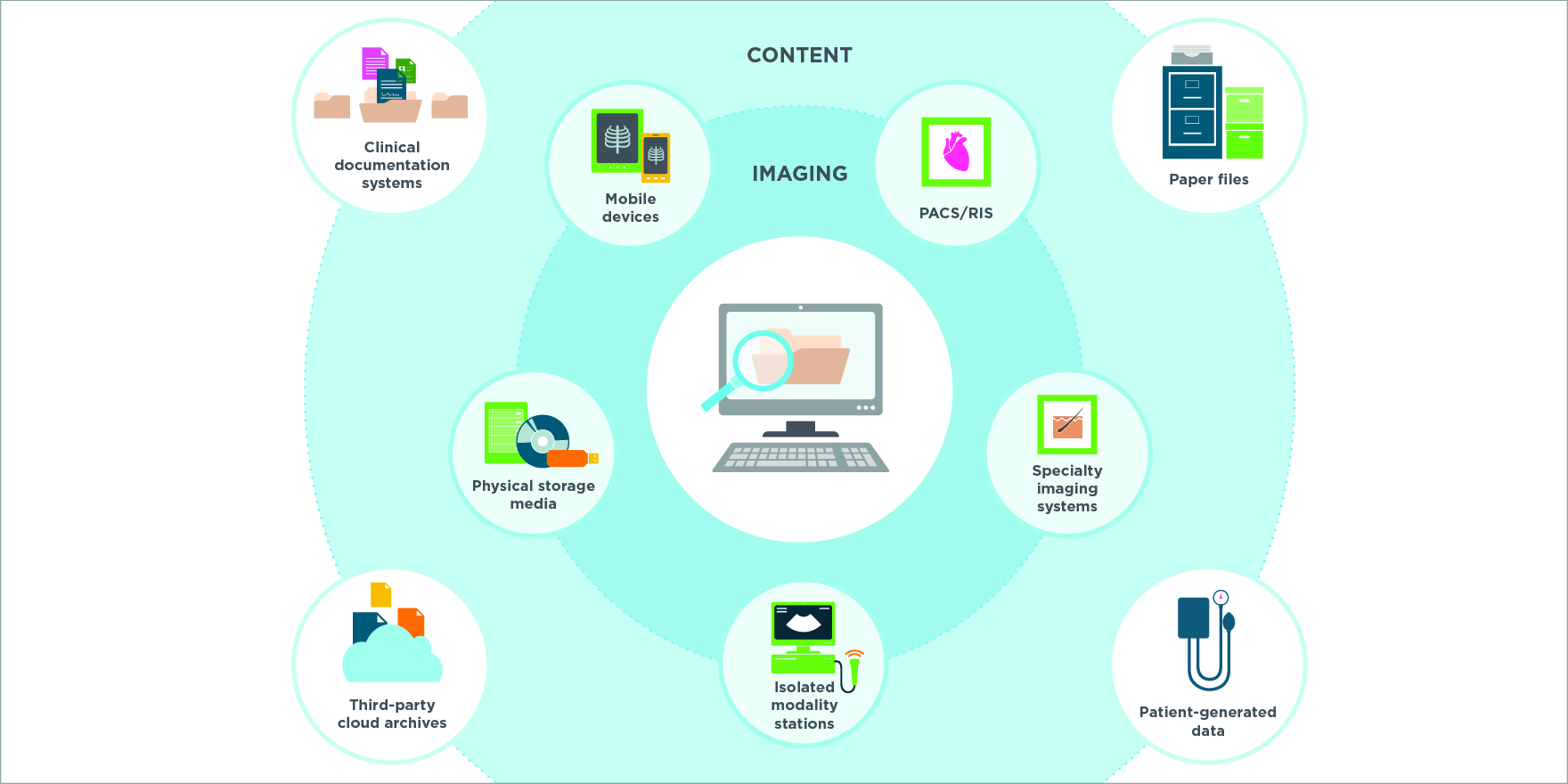
CONTENT
Clinical documentation systems: HIM systems, records management systems and other departmental content management applications are a treasure trove of scanned PDF or Word-based documents, registration forms, referral documents, HIPAA privacy documents and more.
Paper files: Many healthcare providers still maintain file cabinets full of paper medical records in addition to their EMR.
Patient-generated data: Health data generated by sensor-based or biometric devices (e.g. smart scales, blood pressure cuffs, A1C monitors, etc.) to monitor health and wellness remotely.
Third-party cloud archives: Commercially available cloud archives such as Dropbox and Google Drive can often be sources where clinical documents, images and other patient data is stored.
IMAGING
Mobile devices: Visible-light images captured by clinicians on enterprise-issued smartphones, tablets or other mobile devices at the point-of-care.
PACS/RIS: These systems store DICOM-based radiology and cardiology images (e.g. MRIs, CT scans, etc.).
Specialty imaging systems: Common to departments such as Dermatology, Gastroenterology, Ophthalmology, Pathology and more, these system store non-DICOM visible-light image files (e.g. JPEG, AVI, MPEG).
Isolated modality stations: Isolated modalities (such as ultrasound devices) are often used to capture images at the point-of-care. These imaging studies don’t always have traditional radiology orders associated with them and can be difficult to track and manage.
Physical storage media: Medical images or documents archived on or transported from other providers on CDs, DVDs, USB drives and tape media.
To build a complete patient record and see your whole patient, all of these siloed clinical information sources should be integrated with your EMR. See how connected healthcare solutions from Hyland can help.
Learn more at Hyland Healthcare.

